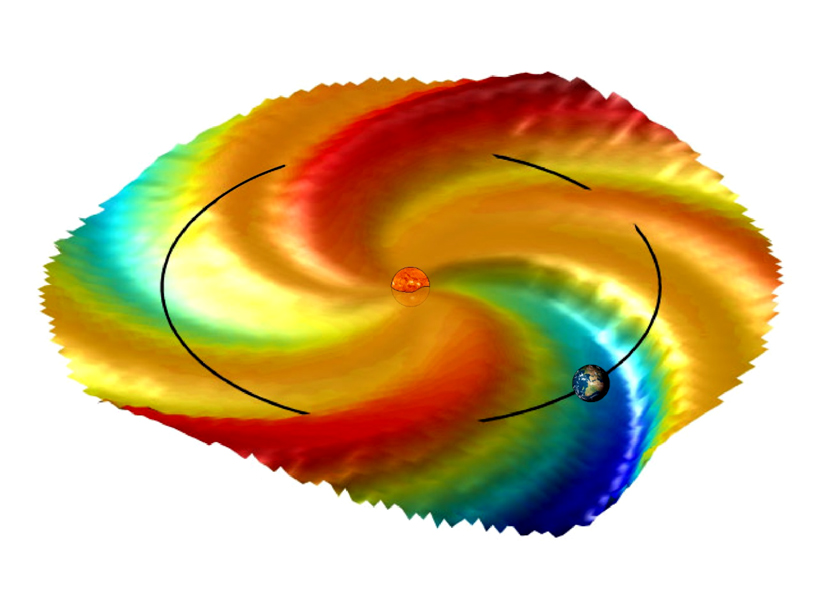Source: Geophysical Research Letters
Since the 1930s, scientists have speculated that solar activity influences the rate of lightning strikes on Earth. Most studies have focused on the long-term relationship between thunderstorms and the 11-year solar cycle. Here Owens et al. demonstrate that polarity switches in the Sun’s magnetic field affect lightning rates on a day-to-day scale.
The study builds on the authors’ previous research. In an earlier study, one of the researchers found that lightning rates were 50% higher on days when the Sun’s magnetic field pointed toward Earth than when it pointed away. A study by a second author showed increased lightning after Earth passed through corotating interaction regions (CIRs), where fast-flowing solar wind compresses slower solar wind—and the Sun’s magnetic field—ahead of it.
The Sun’s magnetic field switches polarity along a twisted spiral surface called the heliospheric current sheet (HCS), which spans the solar system and occasionally intersects Earth’s orbit. CIRs are strongly associated with the HCS, leading the researchers to suspect that the increase in lightning found in both their previous studies shared an underlying mechanism.
For the new study, the team tracked changes in hourly lightning rates as the HCS passed by Earth. They collected radio observations of lightning flashes within 500 kilometers of central England from mid-2000 to early 2007. They also used records of audible thunder to validate the radio observations.
During the study period, the HCS passed Earth 141 times. The polarity of the Sun’s magnetic field switched from pointing away from Earth to pointing toward Earth 75 times. A switch in the opposite direction occurred 66 times.
The researchers found that thunderstorms peaked within 1–2 days of each HCS crossing. Lightning rates increased just after each away-to-toward switch. Switches in the opposite direction coincided with an initial increase (during the “toward” period) followed by a decrease just after the HCS passed by (the “away” period).
These results suggest that CIRs may increase lightning rates by compressing the solar wind and amplifying the Sun’s magnetic field when it is pointed toward Earth. This supports the researchers’ hypothesis that the findings of their previous studies share a common mechanism.
The team also used spacecraft data to identify which kinds of energetic particles are associated with HCS crossings. They examined records for particles of both solar and galactic origin. No strong relationships were found between lightning rates and particle populations. However, the researchers suggest that an observed increase in energetic particles 2–3 days before an HCS crossing could somehow “prime” the system for the later effects of the polarity switch.
Earth’s own meteorological conditions remain the major driving force behind thunderstorms. However, thanks to these new findings, predictions of away-to-toward HCS crossings may enhance lightning rate forecasts in the future. (Geophysical Research Letters, doi:10.1002/2015GL066802, 2015)
—Sarah Stanley, Freelance Writer
Citation: Stanley, S. (2016), Sun’s magnetic field impacts Earth’s thunderstorms, Eos, 97, doi:10.1029/2016EO044293. Published on 29 January 2016.
Text © 2016. The authors. CC BY-NC 3.0
Except where otherwise noted, images are subject to copyright. Any reuse without express permission from the copyright owner is prohibited.

